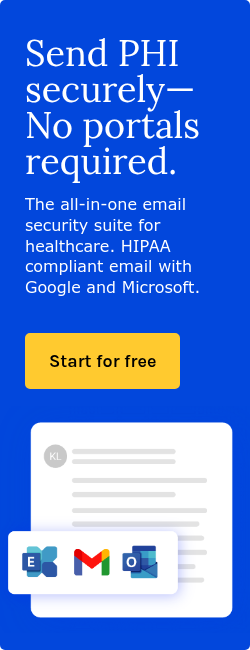6 min read
What healthcare providers need to know about the CDPAP transition
Gugu Ntsele April 23, 2025

New York State's Consumer Directed Personal Assistance Program (CDPAP) is undergoing a transformation that has implications for healthcare providers across the state. The $9 billion Medicaid program, which has operated through nearly 600 fiscal intermediaries, is being consolidated under a single management company—Public Partnerships LLC (PPL). This transition has faced legal challenges, with a federal judge recently extending a temporary restraining order that requires the New York State Department of Health (DOH) to continue working with existing fiscal intermediaries beyond the original April 1 deadline.
What is CDPAP and why the consolidation?
According to the New York State Department of Health (NY DOH), “The Consumer Directed Personal Assistance Program, or "CDPAP", is a New York State Medicaid program that allows Medicaid members who are eligible for home care services to choose and hire their own personal caregiver, or "personal assistant." This can include a friend or family member, as long as they are not the Medicaid member's spouse, their designated representative or the parent of a CDPAP consumer under the age of 21.”
The CDPAP provides services to “chronically ill or physically disabled individuals who have a medical need for help with daily activities or who require skilled nursing services. The CDPAP services provided by a personal assistant can include any of the services normally provided by a personal care aide (home attendant), home health aide, or nurse.”
This program has operated through approximately 600 fiscal intermediaries (FIs)—agencies that handle payroll, benefits administration, and compliance requirements for the personal assistants while the consumers maintain control over their care.
The push for consolidation
Governor Kathy Hochul's administration has pushed to consolidate these services under a single statewide entity—Public Partnerships LLC. Based on a News10 article published in October 2024, we could say that the primary motivations behind this consolidation include:
- Cost containment: The CDPAP program's expenses have surged, and the state aims to manage costs by consolidating services under PPL, thereby eliminating redundancies and reducing administrative overhead.
- Standardization: Previously, over 600 fiscal intermediaries managed CDPAP, leading to inconsistent administrative practices. Transitioning to a single entity is intended to standardize processes and improve quality control across the state.
- Budget considerations: Facing persistent budget pressures, particularly within Medicaid, the state views this consolidation as a means to control spending without directly cutting services.
- Simplified oversight: Managing one entity instead of hundreds simplifies regulatory oversight and accountability, making it easier to monitor and evaluate program effectiveness.
In a recent press release by the NY DOH, “The reforms being made in New York directly address the runaway costs of the program and root out fraud and abuse, including a recently discovered $68 million fraud scheme and hundreds of millions more lost to administrative middlemen. The transition saves taxpayers $1 billion a year. This is a commonsense effort that protects services for CDPAP consumers while reducing wasteful administrative spending going to middlemen and Medicaid fraud.
Furthermore, “PPL is offering Personal Assistants competitive wages and a robust benefits package that includes paid time off, holiday pay, overtime, participation in a health benefits plan and 401(k) plan, paid professional development training, paid family leave and more. Personal assistants whose consumers live in Bronx, New York, Kings, Queens, Richmond, Nassau, Suffolk, and Westchester counties also receive a flex card with funds to use on medical and dental expenses, medications, transportation and other health-related expenses.”
Lastly, “PPL currently has more than 40 Facilitators supporting the transition efforts. Through this diverse alliance, New York will deliver a stronger CDPAP and ensure New Yorkers in the program will receive the high-quality care they need.”
The legal challenge and current status
The transition has not been smooth. CDPAP users and two independent living centers filed a federal lawsuit, Engesser et al v. McDonald, alleging the transition violates both the 14th Amendment and the Medicaid Act, which requires Medicaid recipients to receive timely notice before losing services.
The current legal situation includes:
- A federal judge in the U.S. District Court for the Eastern District of New York has extended a temporary restraining order requiring the DOH to continue working with the existing fiscal intermediaries.
- On April 10, 2025, Judge Block approved a preliminary injunction negotiated by the parties. This injunction extends the registration deadline for CDPAP consumers to May 15, 2025, and for personal assistants (PAs) to June 6, 2025. Under this injunction, PAs who have not completed registration with PPL may continue to be paid by their previous fiscal intermediaries until they are fully registered.
- As of early April 2025, approximately 180,000 people have completed registration with PPL, leaving about 40,000 consumers (and tens of thousands of personal assistants) who have not finished or started the process.
- The DOH is currently negotiating terms to comply with the preliminary injunction. Attorneys with the New York Legal Assistance Group (NYLAG) have been advocating for extensions to ensure that consumers and PAs have adequate time to complete the transition without service disruptions.
How this affects healthcare providers
Immediate operational impacts
1. Disrupted care coordination
The transition has introduced uncertainties that impact care coordination for CDPAP consumers. According to an article by Times Union, “As of early April 2025, approximately 195,000 participants had either started or completed enrollment with PPL, leaving a significant number yet to register.” This gap raises concerns about potential service disruptions, especially if personal assistants (PAs) face payment delays due to incomplete registrations. Such uncertainties can lead to care gaps, adversely affecting patient outcomes.
2. Administrative burden
Healthcare providers often serve as intermediaries, helping patients navigate policy changes. The CDPAP transition has increased this administrative burden, as providers assist patients and families in understanding new registration processes and deadlines. “The Department of Health has acknowledged the challenges, noting that the transfer of paperwork for thousands of clients and their aides has moved slowly, prompting the announcement of a one-month ‘late registration window’ to assist consumers experiencing difficulties,” notes the Times Union article.
3. Referral network disruption
Many healthcare providers have established relationships with specific fiscal intermediaries. The consolidation disrupts these referral networks and requires establishing new processes with PPL. According to Times Union, “This shift requires establishing new communication channels and workflows, which can be time-consuming and may temporarily affect the efficiency of care coordination.”
4. Communication challenges
Times Union reported that the transition has been plagued by technical difficulties and spotty communication, prompting the Department of Health to announce a one-month grace period to assist users facing registration challenges.
One user, Michelle Fridley, described a 30-minute call with a PPL representative that left many of her questions unanswered.
Long-term strategic implications
1. Changed referral pathways
With a single fiscal intermediary managing the program, the process for referring patients to CDPAP services will change. Healthcare providers will need to develop new relationships with PPL representatives and understand their specific processes.
2. Quality control concerns
The consolidation raises questions about how service quality will be maintained when transitioning from hundreds of specialized local agencies to a single statewide entity. Healthcare providers may need to implement additional monitoring to ensure patients continue receiving appropriate care.
3. Workforce stability
Many personal assistants have reported difficulties with the registration process, raising concerns about workforce stability. If personal assistants leave the program due to payment disruptions or administrative challenges, this could create staffing shortages that directly impact patient care.
4. Financial implications for provider organizations
For healthcare organizations that had financial relationships with existing fiscal intermediaries (such as preferred provider arrangements or collaborative care models), the consolidation may require restructuring these financial relationships.
Navigating the transition as a healthcare provider
1. Stay informed about legal developments
The ongoing legal challenges mean the situation remains fluid. Designate someone in your organization to monitor developments and create a communication plan to provide updates to relevant staff.
2. Develop contingency plans
For patients who rely heavily on CDPAP services, develop contingency plans in case of care disruptions. This might include identifying alternative home care resources or adjusting care plans to accommodate potential gaps in service.
3. Establish direct communication channels with PPL
Rather than waiting for problems to arise, proactively establish communication channels with PPL representatives. This may include requesting dedicated contact persons for your organization or participating in any provider education sessions PPL offers.
4. Document impact on patient care
Systematically document any instances where the transition negatively impacts patient care. This information can be valuable both for internal quality improvement and for providing feedback to policymakers about the real-world effects of the consolidation.
5. Engage with advocacy efforts
Consider engaging with healthcare provider associations and advocacy groups that are monitoring and providing input on the transition. Collective feedback from providers can influence how the transition is implemented moving forward.
6. Update internal processes
Review and update your organization's internal processes related to CDPAP referrals, including:
- Updating referral forms and electronic health record templates
- Training staff on the new procedures
- Developing tracking mechanisms to ensure successful referrals
What providers can expect
Scenario 1: Extended transition period
If the court grants the preliminary injunction extending the deadline to September 30, providers will have more time to adapt to the new system. This scenario would allow for a more orderly transition but would extend the period of administrative uncertainty.
Scenario 2: Modified transition plan
The DOH may negotiate modifications to the transition plan that address some of the concerns raised in the lawsuit while still moving forward with the consolidation. This could include phased implementation or special provisions for complex cases.
Scenario 3: Legislative intervention
With the state legislature currently in session, lawmakers could introduce legislation affecting the transition timeline or implementation details. Several lawmakers have already expressed concerns about the transition's impact.
FAQs
Will the transition affect managed long-term care (MLTC) plan coordination?
Yes, MLTC plans must adjust their CDPAP workflows to integrate with PPL's centralized system.
Will personal assistants hired under the previous fiscal intermediaries need to undergo new background checks?
PPL may require new documentation, including verification of eligibility, but not all PAs must repeat background checks.
What happens if a PA refuses to register with PPL?
If a PA does not register, they will no longer be eligible for payment once the injunction period ends.
How can providers report systemic issues they observe during the transition?
Issues can be reported to the NY Department of Health or shared through professional associations and advocacy groups.
Will consumers be able to retain their current personal assistants?
Yes, but only if both the consumer and the PA complete registration with PPL by the court-mandated deadlines.
Subscribe to Paubox Weekly
Every Friday we'll bring you the most important news from Paubox. Our aim is to make you smarter, faster.




